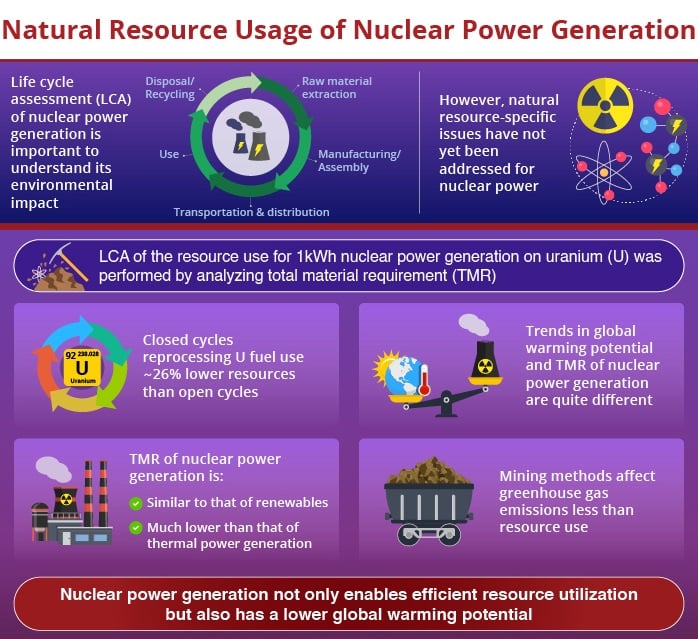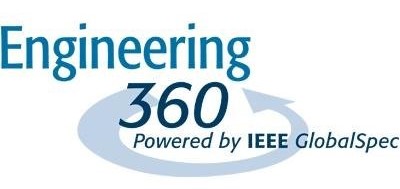S. Himmelstein | July 20, 2022
Lifecycle assessments of the nuclear power sector typically consider greenhouse gas emissions and waste management issues. A largely neglected component of such environmental impact analyses has been evaluated by researchers from Ritsumeikan University, Japan: total material requirement (TMR) from uranium mining through spent fuel management phases.
The cradle to grave assessment reported in the Journal of Cleaner Production focuses on the life cycle resource use of nuclear power generation for 1 kWh based on uranium fuel. Both open and closed fuel cycles were considered, as were open-pit mining, underground mining and in situ leaching approaches to uranium extraction.
 Source: Ritsumeikan University
Source: Ritsumeikan University
Mining intensity, expressed as the TMR coefficient, was highest for enriched uranium fuel, followed by nuclear fuel, reprocessed uranium fuel, mixed oxide fuel and yellow-cake. The grade of uranium ore was observed to have a large impact on the TMR coefficient, indicating that TMR varied significantly with different mining methods. In situ leaching had the lowest TMR. A closed cycle that reprocesses uranium fuel consumes 26% less resources than an open cycle that does not reuse its by-products.
Notably, natural resource use of nuclear power generation was similar to that of renewable energy and markedly lower than that of thermal power generation. The researchers concluded that the TMR and greenhouse gas emissions of nuclear power generation are considerably lower than that commonly deployed thermal power generation technologies, making it an environmentally favorable source of power generation.
